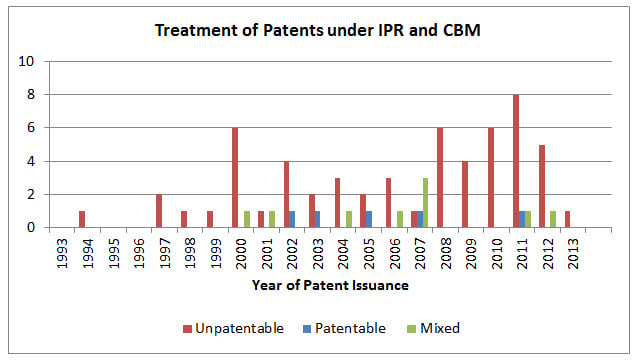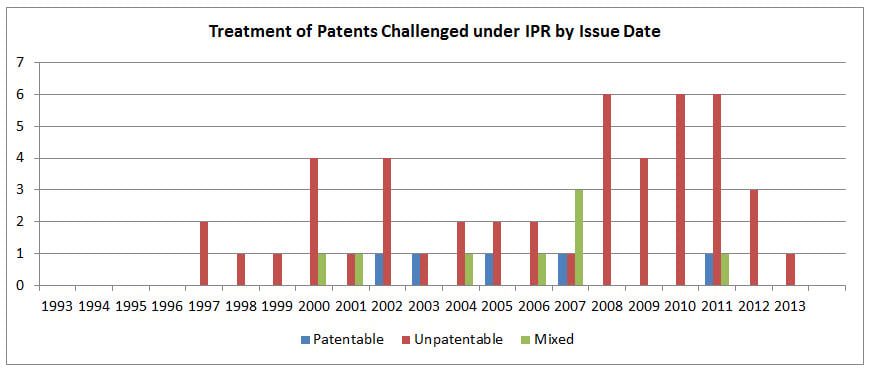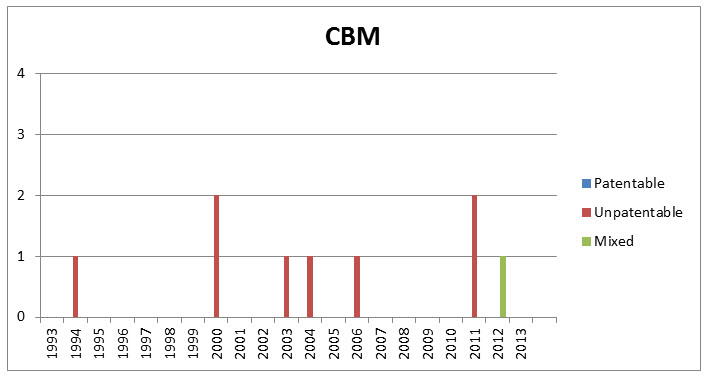Since September 16, 2012, inter partes review (IPR) and covered business method (CBM) review have been available as proceedings to challenge the validity of patents before the PTO. This article looks at how the Patent Trial and Appeal Board (PTAB) is treating patents that have been challenged through IPR and CBM review, specifically based on the patent's issue date. We have used a patent analytics database called PatentBoardFerret.com developed by the author, Trent Ostler, a patent attorney at Venable. Patent Board Ferret imports all of the Board's decisions and associated patent data, and includes analysis and additional data associated with the patent application for accessing the massive amount of PTAB-related data, including post-AIA procedures such as IPRs and CBMs.
The PTO has long sought to balance allowing applications that deserve a patent and preventing those that do not, without making it too difficult on the patent-worthy applicant. The IPR and CBM review procedures were designed to allow challenges to patents that should never have been allowed.
The graphs below show the PTAB's treatment of IPR- or CBM-challenged patents, as of May 8, 2014, organized by the issue date of the patent. On each of these charts, a disposition corresponds to a Final Written Decision of a completed trial as it relates to a single patent. Not included in the graphs are the many IPR and CBM petitions that are denied institution of trial or that have terminated proceedings because of settlements. Indeed, to date there have been more dismissed petitions than Final Written Decisions.
- The "Patentable" label corresponds to a Final Written Decision in which the Board affirmed the patentability of the claims.
- The "Unpatentable" label corresponds to a Final Written Decision in which all of the claims were found to be unpatentable. For purposes of the Final Written Decision data set, "Unpatentable" includes cases where the patentee requests an adverse judgment against the challenged claim (disclaim) and situations in which the patentee cancels all challenged claims in hopes of requesting additional substitute claims.1
- The "Mixed" label represents a Final Written Decision in which at least one claim was found to be patentable and at least one claim was found to be unpatentable.
Of Challenged Patents to Date, the Strongest Have Been from the Mid-2000s
The following graph combines data from IPRs and CBMs. Under the new procedures, patents from every year of issuance since 1994 have been invalidated. However, the degree of unpatentable/patentable determinations has not been uniform. For instance, the mid-2000s reveals a pocket of patentable determinations for patents. The graph shows that the largest percentage of at least one claim in a patent upheld as patentable ("Mixed" or "Patentable") was issued during the period 2002-2007. Thus, while we would not put any predictive value on this data, we see that of the patents challenged to date, the strongest have been from the mid-2000s.

Patents Challenged by IPR Show This Trend
Below is a breakdown of the data for only IPRs. The patent challenged by an IPR with the earliest issue date was U.S. Patent No. 5,592,555, which was issued in 1997; and the patent challenged with the most recent issue date was U.S. Patent No. 8,474,183, issued in 2013. As can be seen below, there is a lot of red – that is, for cases in which an IPR was instituted, all challenged claims in the patent were deemed unpatentable. Again, this is particularly true in the periods 1997-2002 and 2008-2012.

No Patents Challenged by CBM Have Yet to Emerge Unscathed
Below is a breakdown of the data for only CBMs. The earliest patent challenged under CBM is U.S. Patent No. 5,361,201, issued in 1994; and the most recently challenged patent is U.S. Patent No. 8,140,358, issued in 2012. While the sample size of CBM challenges is small, some patents issued in the early 2000s as well as recent patents have resulted in canceled claims. Interestingly, every instituted CBM to date has resulted in the cancellation of at least one claim; in other words, a patent has yet to survive unscathed under a CBM before the PTAB.

1 35 U.S.C. § 318(a) provides that if an inter partes review is instituted, the PTAB shall issue a final written decision with respect to the patentability of any patent claim challenged by the Petitioner and any new claim under section 316(d). Thus, the set includes decisions in which the patentee (i) requests an adverse judgment against the challenged claims, or (ii) has canceled all challenged claims requesting addition of substitute claims, which is denied.